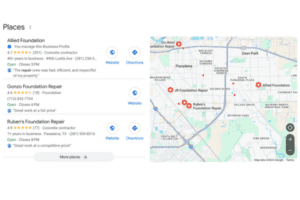The old adage in customer service is that “the customer is always right.” And while we certainly want to ensure that we’re giving our customers the best experience we can, the reality is that customers are not always right. And sometimes we have to find a way to tell them that they’re wrong.
Telling a customer that they are wrong can be a delicate topic. You don’t want to insult or offend your customer – after all, customers are people deserving basic respect and you probably want to keep their business if possible. But in many cases, you can’t accommodate their request and you’ll need to let them know. If they’re asking you to do something illegal, unethical, or impossible, you’ll need to tell them the truth – even if that means telling them that that they’re wrong.
Why having customer service processes help
When telling a customer they are wrong, the best thing you can do is have efficient, impartial processes to point to.
For starters, having efficient customer service processes in place will automatically cut down on the need to tell customers they are wrong. Accessible, clearly defined processes – such as ensuring expectations are managed, communication is clear, contact information is up to date, etc. – will eliminate customer misunderstanding and frustration before it begins.
On the other end, having clearly defined processes empowers you and your employees to find solutions to customers issues. If you have clearly defined processes in place, it helps your employees to be able to show and explain to a customer who is wrong why they’re wrong without making it personal – and will enable you and your staff to find solutions to the customer’s complaints or frustrations.
Processes are a vital part of your customer service experience, for both your customers and your employees. There are a few things you can do to make your sure your processes are efficient.
How to improve your customer service processes
Your customer service processes can help mitigate customer frustrations and complaints before they arise. They give you and your team ways to handle any customer complaints and misunderstandings that may arise in ways that build trust between your company and your customers. Here are some key elements in making sure your customer service processes are the best they can be:
- Manage expectations – Make sure that customers know what to expect from your company at every step of the process. This means making sure your website is up to date with accurate, clear information, any contact information you have is up-to-date, realistic expectations for things like shipping times are given, etc. Be as clear and honest as possible. Your customers are much less likely to become frustrated if they know what to expect from the beginning.
- Clear communication – This is related to managing expectations, but goes even further. Ensure that all interactions with your customers are clear. Make sure you and your staff are practicing active listening and seek clarification if you don’t understand what the customer is asking.
- Make your business inviting and intuitive – Whether you have a physical location or just an online one, making sure the parts of your business that customers interact with are easy to find and are appealing will go a long way towards improving customer experience. If you have a physical location, make sure it’s easy to find and clean. For websites or online stores, make the website easy to navigate. Making sure that the platform in which your customers interact with you is easy to find and use will improve your customer’s experience.
- Be responsive – Responsiveness is a huge element in mitigating customer complaints. Even if you don’t have an immediate answer, acknowledge the customer’s question and explain what you’re doing to find the answer. Whether you have a brick-and-mortar store or are based solely online, responding to and acknowledging customers right away is important – even before they bring up any potential questions or problems. This applies to your brand’s social media presence as well. Increasingly, customers are turning to social media sites such as Twitter, Facebook, and Instagram to ask questions or make complaints. Making sure you are monitoring and responding to customer interactions on social media is an important part of your customer service process. Even if customers are bringing up issues that can’t be addressed right away, or if they leave wrong reviews, responding to them immediately and then directing them to a place where you can help is vitally important.
- Brush up on customer service skills – Make sure you and your staff are up-to-date on the core customer service skills. Sometimes it can be easy to let them slide, so it’s a good idea to make sure that you and your team are refreshed on the basics.
- Be prepared – Being prepared for any number of potential issues is important. Take some time to think of common customer issues or questions and plan in advance how to deal with it. Make sure everyone on your team knows the policies and procedures and everyone is acting consistently. It’s a good idea to think about what to do in less frequent situations, such as if a customer’s package gets lost, or if they purchase your product and then return it damaged. It’s also a good idea to have clear delegation and process for customer issues. Knowing who on your team handles what kinds of issues or questions goes a long way in making sure that the customer is receiving consistent information.
These are just some of the ways that you can make sure your customer service processes are efficient. Having these processes in place will cut down on a lot of customer confusion and complaints.
But even with excellent customer service, sometimes customers are still wrong. Despite your best efforts to make everything go smoothly, sometimes customers are still confused or expect special treatment, or are simply having a difficult time understanding.
5 ways to respond to customer complaints when they’re wrong
Sometimes you’ll be faced with a customer who is just wrong. This customer may completely ignore the processes you have in place. How can you tell this customer they’re wrong while still maintaining your dignity and professionalism? Here are five steps to engage in with a difficult customer who is wrong:
- Thank them for bringing the issue to your attention & acknowledge their feelings – Thanking the customer for coming to you with their concern – however wrong it may be – shows them that you value their opinion. When you acknowledge their frustration, the customer feels heard and valued. This is laying the groundwork for the fact that your ‘no’ or your correction of why they’re wrong isn’t personal.
- Repeat their complaint in your own words – State what you’re hearing them say and ensure that you have it correctly. This shows the customer that you’re listening and also makes sure you’re addressing the right issue. For example, if a customer is coming to you with a complaint about a product shipping, you would say: “I understand that you’re experiencing frustration with the shipping date being delayed. Is that correct?”
- Explain the process and why you can’t comply – Once you’re sure you are both on the same page about the issue, explain why their request cannot be completed. Refer them to your company processes and procedures and why you can’t complete their request.
- Offer an alternative solution – Sometimes, even if you tell a customer they are wrong about a particular issue, there are alternative solutions that may address the issue or at least satisfy the customer.
- Follow up – Following up after telling a customer they are wrong is key. Make sure you’ve done everything you can to help them be satisfied with the solution you found. Following up shows them that you care about their experience, even if you couldn’t help them on a particular issue.
And sometimes, customers will not respond well to any of these steps. Sometimes they will berate you or your staff. In those rare cases, the best thing you can do is to simply walk away and let them know that abuse of your employees (and sometimes other customers) will not be tolerated. If you’ve done everything you can do and the customer refuses to cooperate, cut your losses and focus on your other customers.
At the end of the day, customers will sometimes be wrong or misunderstand your company’s policies. Taking steps to ensure that you have clear, efficient processes will go a long way in fostering better customer service experiences – for your customers and your staff. And when customers are wrong, knowing how to handle the interactions gracefully and clearly will help you continue to provide excellent service even in potentially difficult situations.















